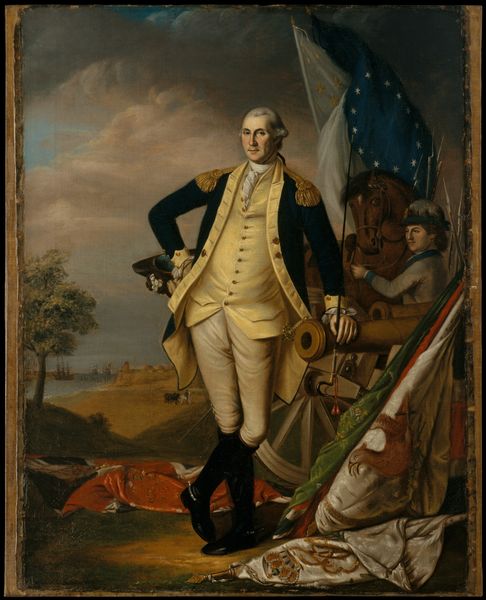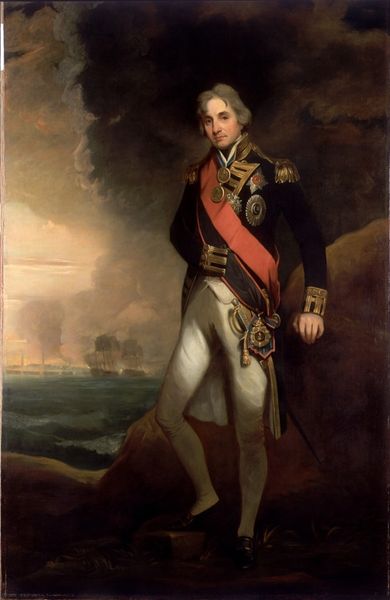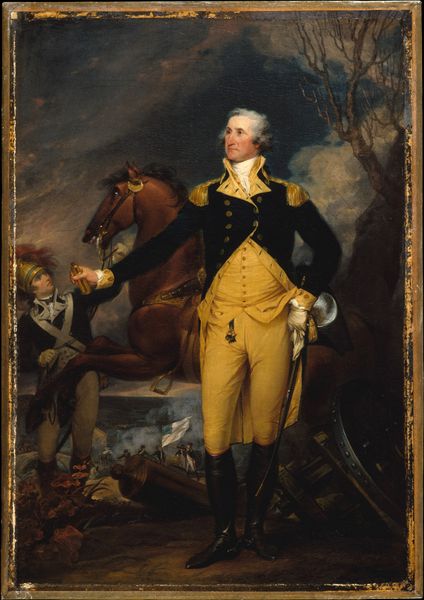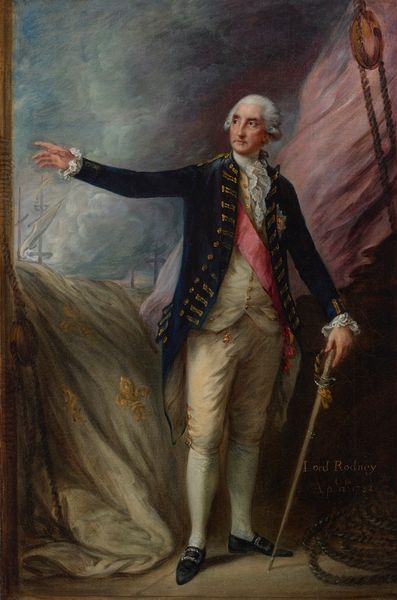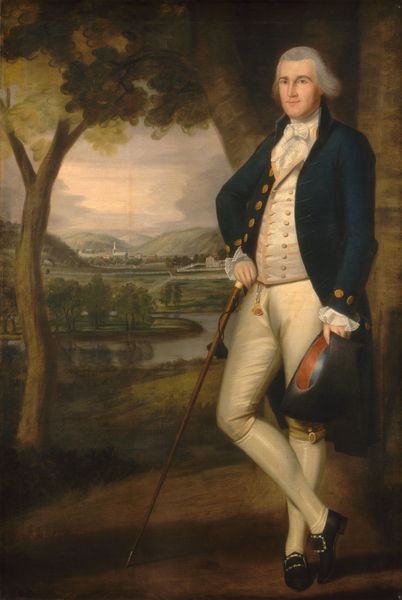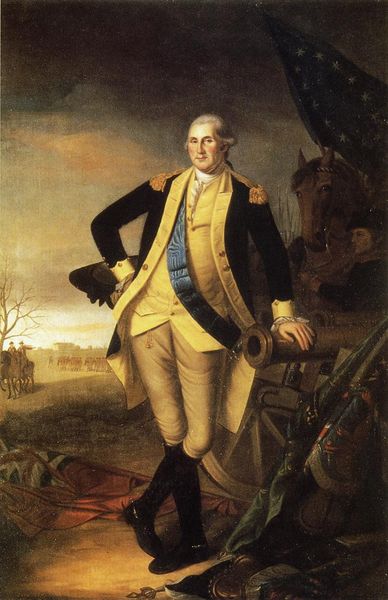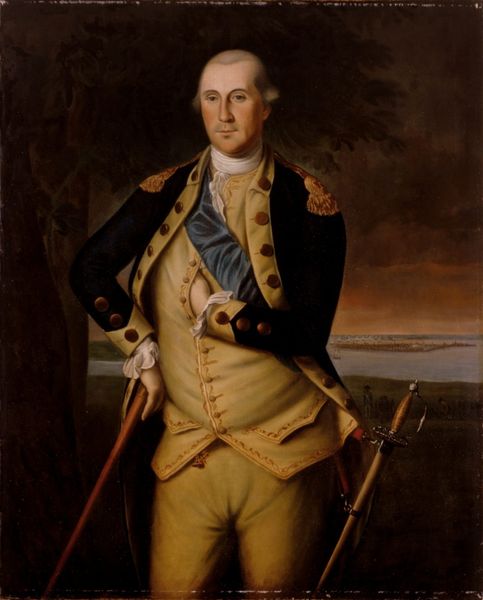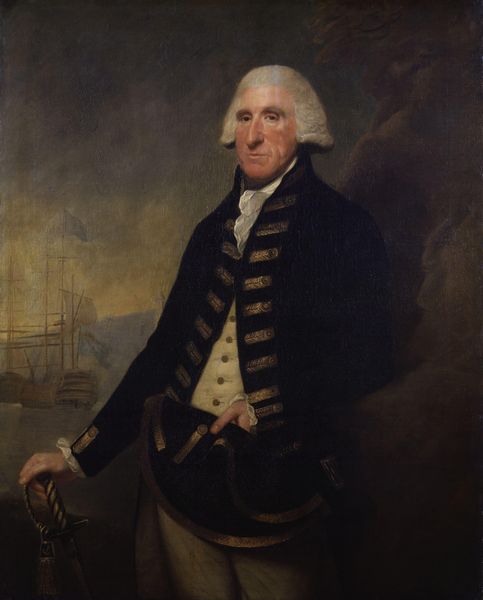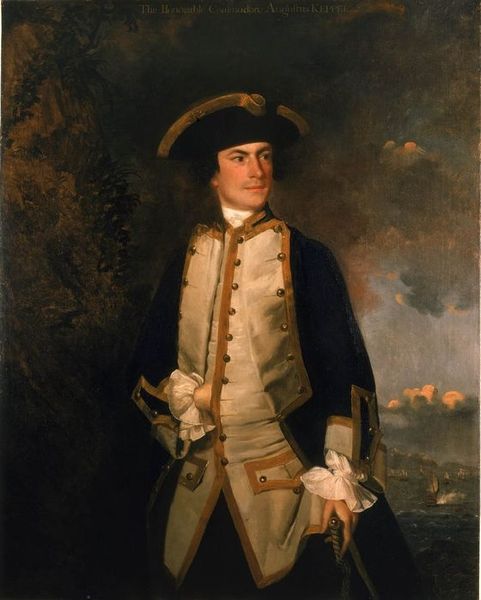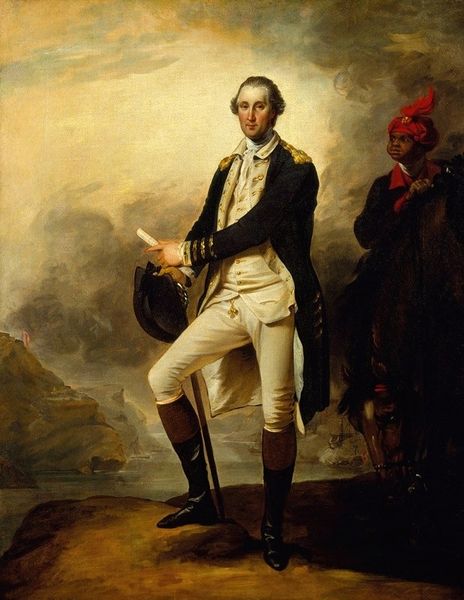
painting, oil-paint
#
portrait
#
neoclacissism
#
narrative-art
#
painting
#
oil-paint
#
history-painting
#
academic-art
Dimensions: 95 x 61 3/4 in. (241.3 x 156.8 cm)
Copyright: Public Domain
Charles Willson Peale painted this portrait of George Washington in the late 18th century, a period of immense social and political change in the newly formed United States. Washington is depicted here as a leader, standing confidently next to a cannon, with a battlefield and the American flag in the background. But this isn't just a portrait of a man; it's an image carefully constructed to convey power, authority, and national identity. Consider the historical context. The American Revolution had just ended, and the nation was grappling with questions of governance and identity. Peale's portrait contributes to the construction of Washington as a symbol of unity and strength, subtly reinforcing the values of the new republic. To truly understand this artwork, we need to delve into the visual culture of the time, examining the conventions of portraiture and the ways in which they were deployed to shape public perception. We might explore archival documents and other historical resources to gain insight into the social and institutional forces that shaped both the production and reception of this iconic image.
Comments
No comments
Be the first to comment and join the conversation on the ultimate creative platform.
